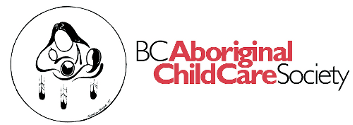A collaborative approach to literacy Jodi Streelasky [electronic resource] : inner-city preschool children, families and the school community /
Material type: ArticlePublication details: 2008Description: 1 online resource (p. 27-33) : digital, PDF fileSubject(s): Early childhood education | Literacy -- Study and teachingOnline resources: Full text
In:
Australasian Journal of Early Childhood Vol. 33, no. 3 (September 2008), p. 27-33Abstract: Makin and Jones Diaz (2002) suggest that young children’s early literacy is most strongly supported when early childhood educators, children’s families and the wider community develop shared understandings about literacy—what counts, what is valued and validated, and whose voices are heard and whose voices are silent. Researchers such as Haas Dyson (1993), Kress (1997), and Stein (2003) argue that young children’s literacy experiences comprise much more than developing the conventional processes of written language, but also include their use of a range of multiple semiotic symbol systems. This article will explore young children’s constructions of literacy, and reveal the important role family members (e.g. parents, aunts, uncles, grandparents) and school staff (e.g. teachers, Elders, speech and language pathologists) play in mediating young children’s literacy learning and development.
ArticlePublication details: 2008Description: 1 online resource (p. 27-33) : digital, PDF fileSubject(s): Early childhood education | Literacy -- Study and teachingOnline resources: Full text
In:
Australasian Journal of Early Childhood Vol. 33, no. 3 (September 2008), p. 27-33Abstract: Makin and Jones Diaz (2002) suggest that young children’s early literacy is most strongly supported when early childhood educators, children’s families and the wider community develop shared understandings about literacy—what counts, what is valued and validated, and whose voices are heard and whose voices are silent. Researchers such as Haas Dyson (1993), Kress (1997), and Stein (2003) argue that young children’s literacy experiences comprise much more than developing the conventional processes of written language, but also include their use of a range of multiple semiotic symbol systems. This article will explore young children’s constructions of literacy, and reveal the important role family members (e.g. parents, aunts, uncles, grandparents) and school staff (e.g. teachers, Elders, speech and language pathologists) play in mediating young children’s literacy learning and development.
Makin and Jones Diaz (2002) suggest that young children’s early literacy is most strongly supported when early childhood educators, children’s families and the wider community develop shared understandings about literacy—what counts, what is valued and validated, and whose voices are heard and whose voices are silent. Researchers such as Haas Dyson (1993), Kress (1997), and Stein (2003) argue that young children’s literacy experiences comprise much more than developing the conventional processes of written language, but also include their use of a range of multiple semiotic symbol systems. This article will explore young children’s constructions of literacy, and reveal the important role family members (e.g. parents, aunts, uncles, grandparents) and school staff (e.g. teachers, Elders, speech and language pathologists) play in mediating young children’s literacy learning and development.

There are no comments on this title.